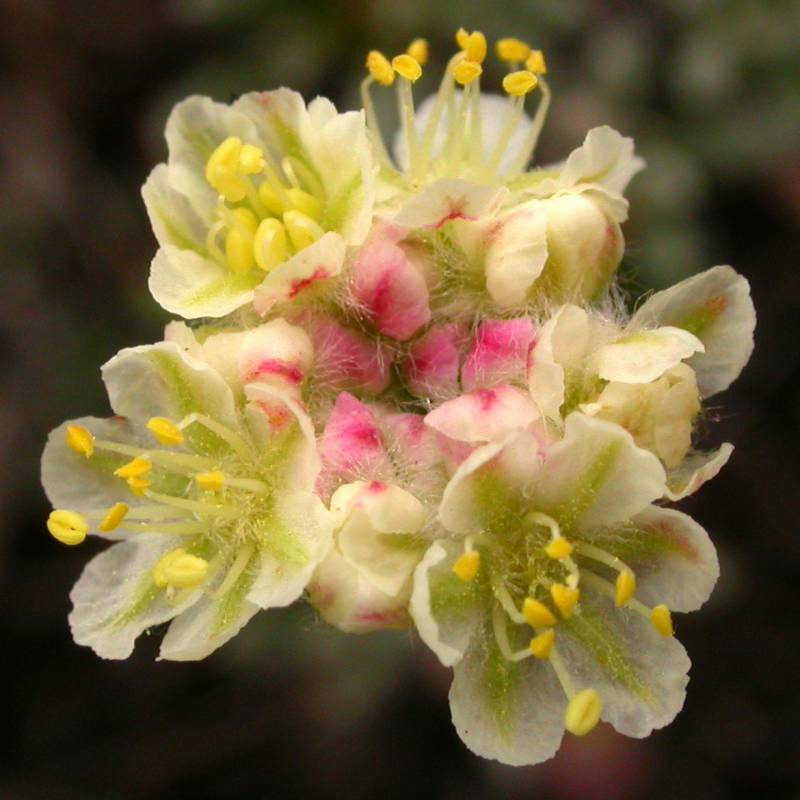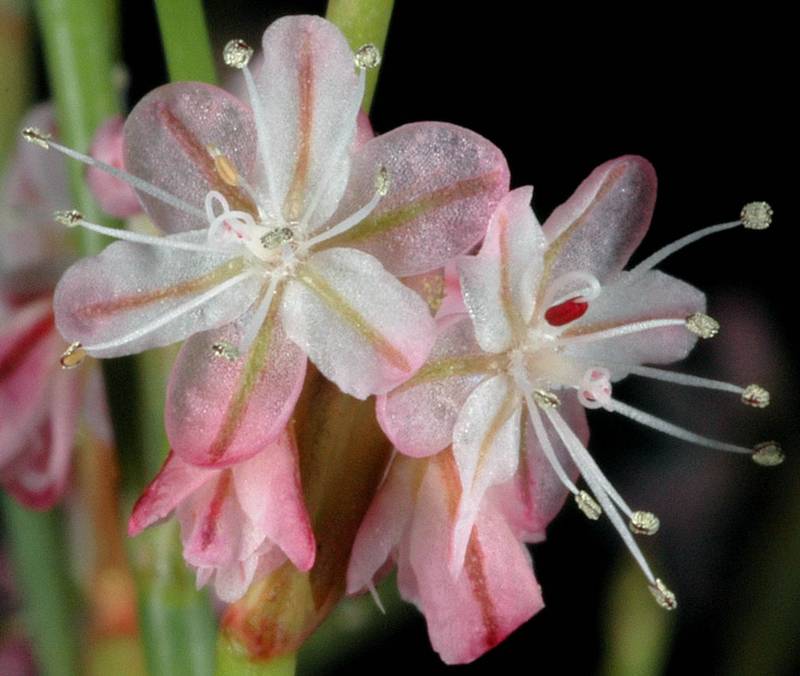Eriogonum thymoides
Eriogonum vimineum
thyme buckwheat, thyme-leaf wild buckwheat
broom buckwheat
Leaves many, linear to linear-spatulate, 3-10 mm. long, usually revolute, somewhat wooly beneath and silky above.
Sub-basal, the blade oval to broadly elliptic, 5-30 mm. long, gray-woolly beneath and gray-green above, the slender petiole 1-3 times as long as the blade.
Flowering stems 3-8 cm. tall, always with a whorl of leaves about mid-length;
involucres single and terminal, top-shaped, 3-5 mm. long, the teeth 6-8, erect, triangular, 1 mm. long;
perianth with a stipitate base 0.5-1 mm. long, densely hairy, the 6 segments obovate, yellow or white to rose-red, 4-6 mm. long; plants dioecious, the staminate flowers with 9 stamens, the filaments hairs only at the base, the pistillate flowers with stout, spreading styles 0.5-1 mm. long.
Inflorescence freely-branched, with involucres 1 per node and sessile at the branch junctions and along the branches and on the branch tips, varying from cylindric and strongly ribbed up to 3 mm. long to cup-shaped and without ribs, 1.5-2 mm. long, and with the 5 lobes rounded and 1/5 the total length;
tepals 1.5-2.5 mm. long, narrowly cup-shaped, white, pink or yellow.
Achenes pubescent above
Achene 3-angled.



